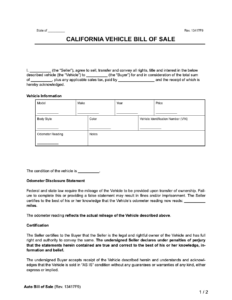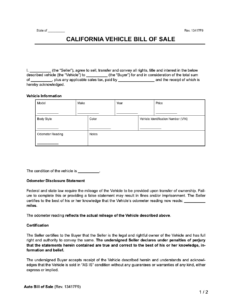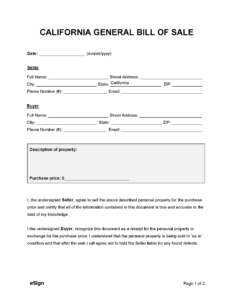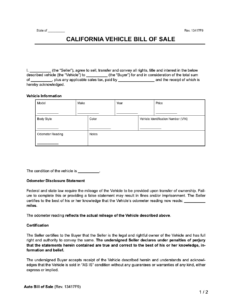Buying or selling a car in the Golden State can be an exciting venture, but it comes with its fair share of paperwork. One document you absolutely cannot skip, whether you are the buyer or the seller, is a bill of sale. Think of it as the official receipt and agreement that solidifies the transfer of ownership for a vehicle, providing a crucial paper trail for both parties involved in the transaction.
While the California Department of Motor Vehicles (DMV) has its own procedures for vehicle transfers, a properly executed bill of sale serves as an invaluable personal record and legal safeguard. It clarifies the terms of the sale, the condition of the vehicle at the time of transfer, and protects both parties from future disputes. That is why having access to a reliable california car bill of sale template can make the process significantly smoother and less stressful.
Why You Absolutely Need a California Car Bill of Sale
A bill of sale for a vehicle in California is much more than just a piece of paper; it is a critical legal document that provides protection and clarity for both the buyer and the seller. For the buyer, it serves as undeniable proof of purchase and a record of the transaction details. This is incredibly important should any questions arise about the vehicle’s condition, the agreed-upon price, or even the date the sale took place. It lays out the terms clearly, helping to prevent misunderstandings down the road.
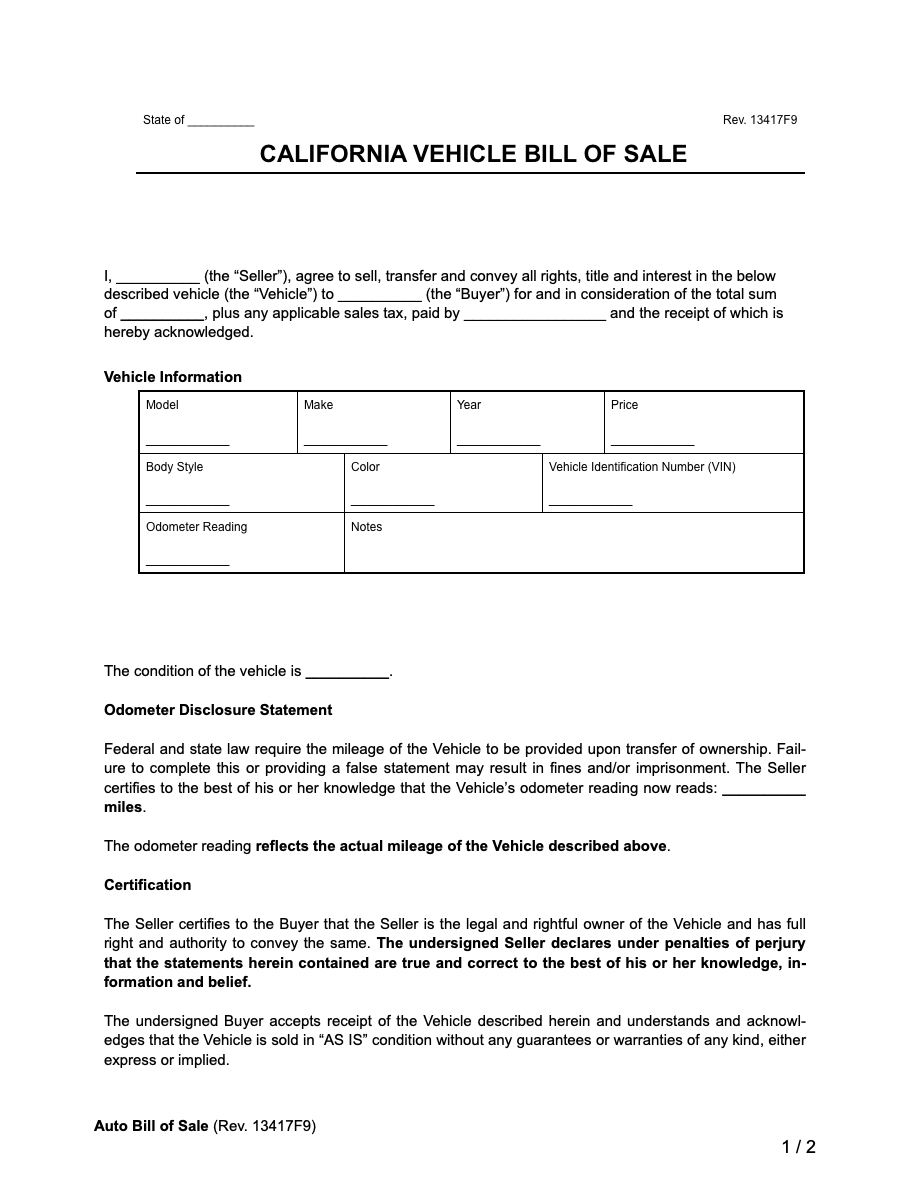
On the seller’s side, the bill of sale is equally vital, especially for releasing liability. In California, once you sell a car, you are generally no longer responsible for parking violations, tolls, or accidents incurred by the new owner. However, to formally inform the DMV that you are no longer the owner, you must submit a Notice of Transfer and Release of Liability (NRL). The information on your bill of sale will precisely match what you submit to the DMV, ensuring a smooth transition of responsibility away from you.
Furthermore, this document can be incredibly useful if a vehicle is sold “as-is,” which is common in private party sales. When clearly stated on the bill of sale that the vehicle is being sold without any warranties or guarantees, it helps to manage the buyer’s expectations and protects the seller from claims regarding the vehicle’s condition after the sale is complete. It is all about setting clear boundaries and expectations from the very beginning of the transaction.
Ultimately, a well-documented sale provides peace of mind. Without it, you are essentially relying on verbal agreements, which are notoriously difficult to prove or enforce. Having a tangible record detailing every aspect of the transaction means you have concrete evidence should any legal issues or disputes arise in the future. It is the backbone of a responsible and transparent vehicle sale or purchase.
Essential Information for Your Bill of Sale
- The full legal names and addresses of both the buyer and the seller.
- The date of the sale and the agreed-upon purchase price.
- A detailed description of the vehicle, including make, model, year, Vehicle Identification Number (VIN), and odometer reading.
- Any specific terms of the sale, such as “as-is” condition.
- Signatures of both the buyer and the seller.
Finding and Using Your California Car Bill of Sale Template
Locating a reliable california car bill of sale template is the first step towards a well-documented transaction. You have several excellent resources at your disposal. The California DMV website is a fantastic starting point, as they often provide official forms or guidance that can be adapted. Beyond government sites, many reputable online legal document providers and automotive resources offer free or low-cost templates specifically designed to meet California’s requirements. When choosing a template, always look for one that is comprehensive and clearly laid out, ensuring it captures all the necessary details for your specific sale.
Once you have your template, the next crucial step is accurately filling it out. Take your time and double-check every piece of information. This includes the full legal names and addresses of both the buyer and the seller, the exact date of the sale, and the precise sale price. Pay particular attention to the vehicle’s details: the make, model, year, and especially the Vehicle Identification Number (VIN) and current odometer reading. Any discrepancy here, no matter how small, could cause headaches later on. Remember, accuracy is your best friend in this process.
After all the blanks are carefully filled in, both the buyer and the seller must sign the document. It is highly recommended to sign the bill of sale in duplicate so that both parties can retain an original copy for their records. While California law typically does not require a bill of sale for a vehicle to be notarized, having it notarized can add an extra layer of authenticity and legal weight to the document, especially for higher-value transactions or if there are any unique circumstances involved. Consider it an optional step that can provide even greater peace of mind.
Finally, remember that the bill of sale is just one part of the vehicle transfer process. For the seller, submitting the Notice of Transfer and Release of Liability (NRL) to the DMV within five days of the sale is absolutely critical to avoid future liability. For the buyer, the bill of sale, along with the vehicle’s title, will be essential when you register the vehicle in your name at the DMV. By properly utilizing a template and following these steps, you ensure a complete and legally sound transfer of vehicle ownership, making the entire experience positive for everyone involved.
Completing a vehicle transaction with a properly filled-out bill of sale offers significant advantages. It streamlines the process, protects both parties from potential future disputes, and provides a clear, undeniable record for all involved. Taking the small amount of time to prepare this document thoroughly can save you a great deal of trouble and uncertainty down the line.
So, whether you are excitedly handing over the keys to a new owner or happily taking possession of your dream car, make sure a comprehensive bill of sale is part of your paperwork. It is the simple, effective way to ensure a smooth, transparent, and legally sound transfer of vehicle ownership, allowing you to focus on the open road ahead without any lingering worries.
